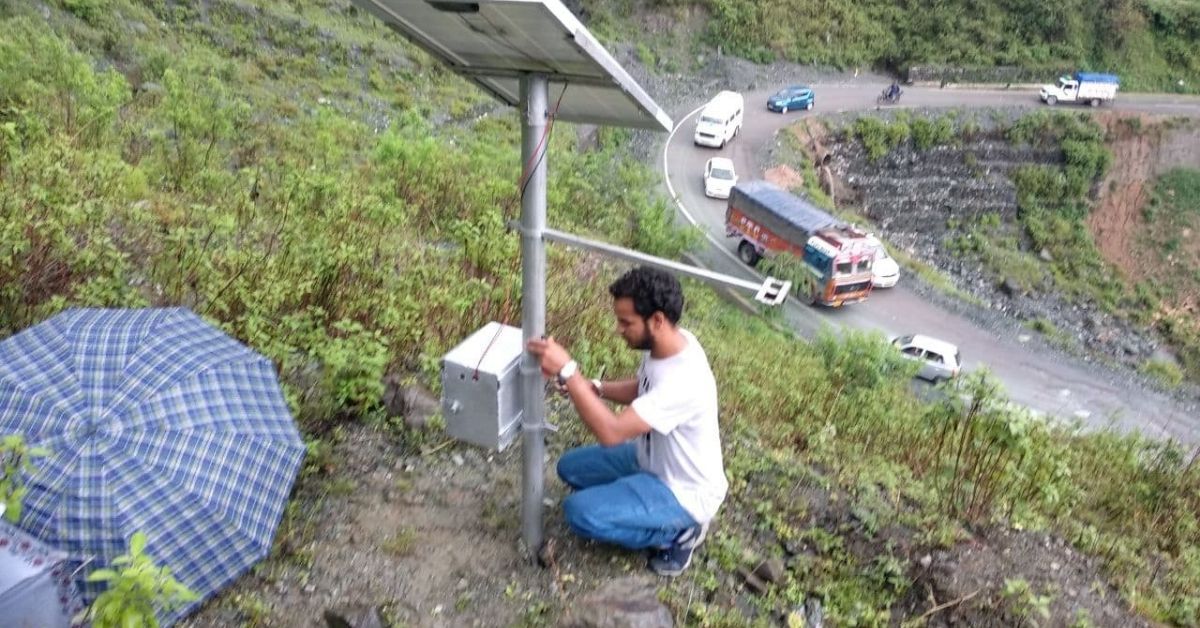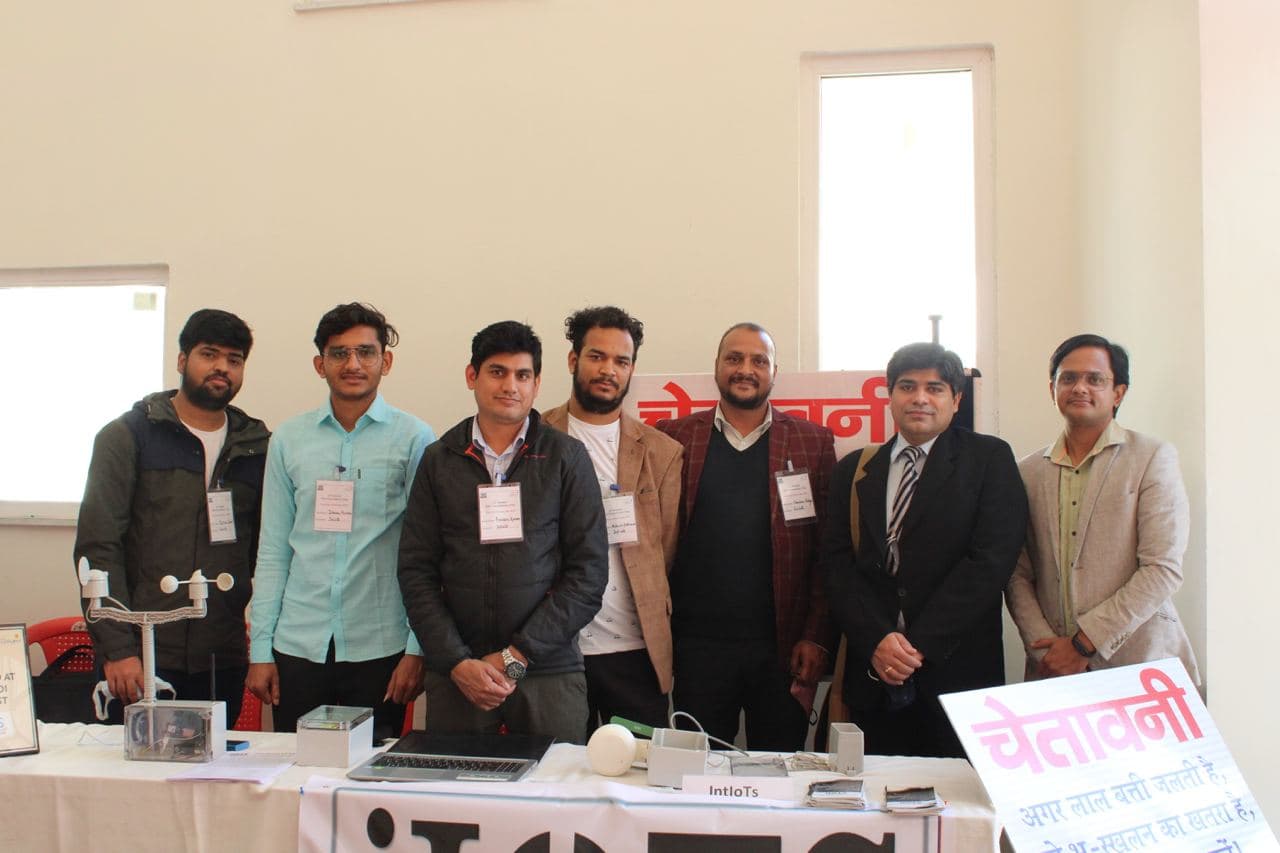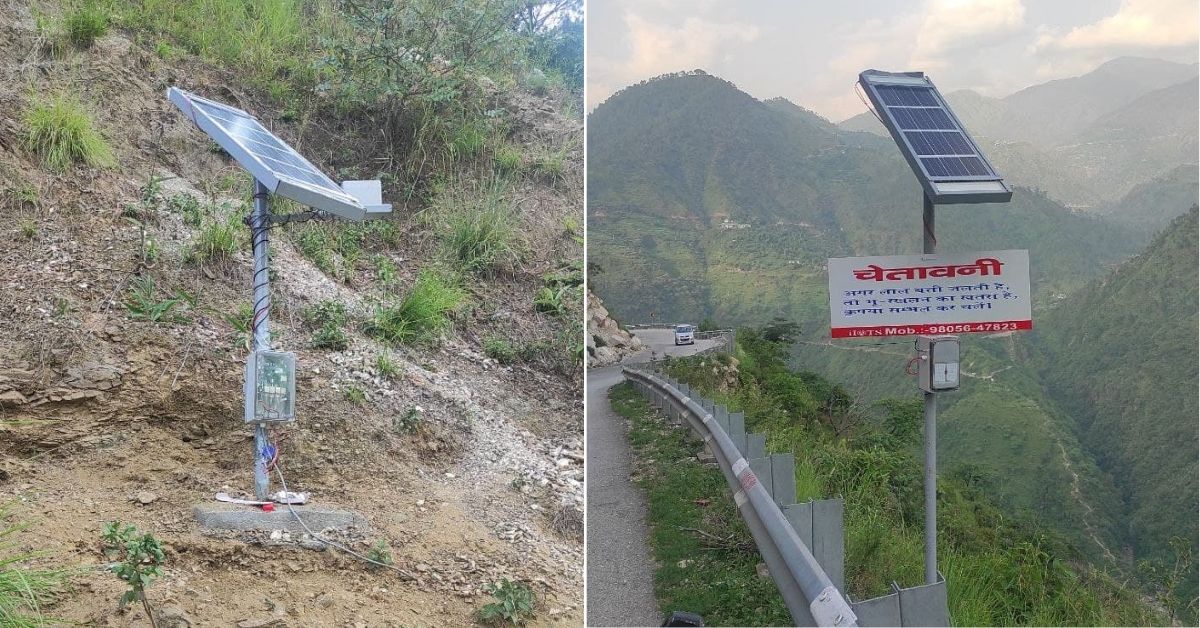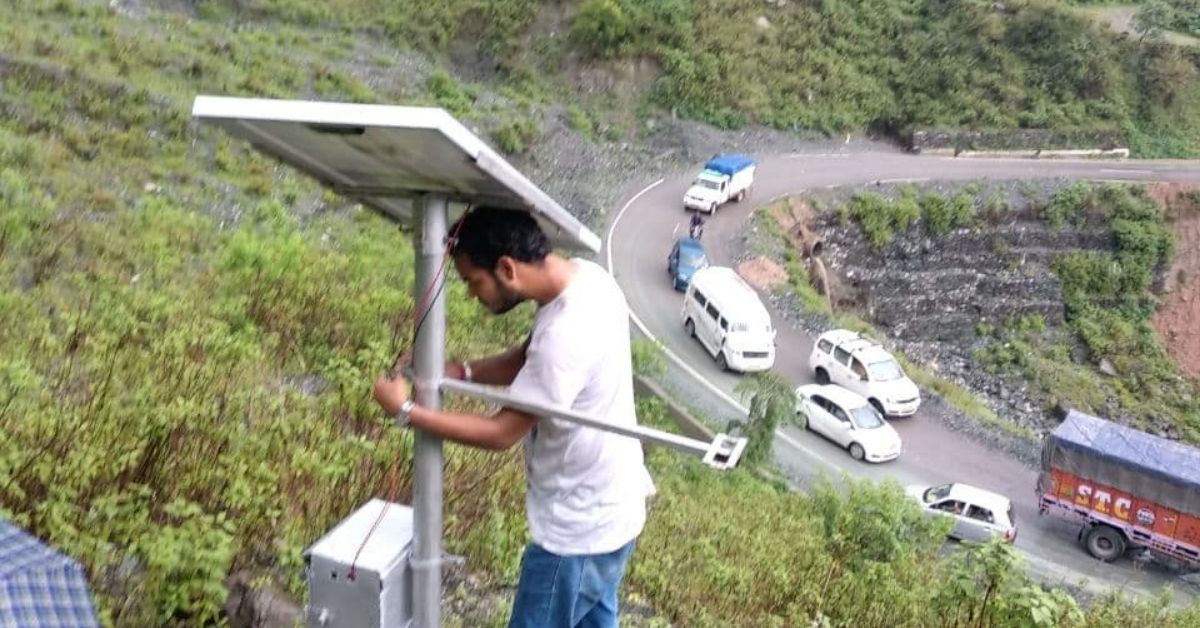IIT Mandi Built an Early Landslide Warning System & More Indian Cities Should Use It
Dr Varun Dutt and Dr KV Uday from IIT Mandi have developed low-cost devices that could provide early warning before a landslide takes place.

In August 2017, a devastating landslide took place in Kotropi, Mandi district in Himachal Pradesh. Two houses were buried under debris, two buses travelling along that road were hit, and over 46 people lost their lives. The disaster could not be predicted despite the heavy rainfall during that week.
This incident led two professors, Dr Varun Dutt and Dr K V Uday, from the Indian Institute of Technology (IIT), Mandi to develop a device that could provide early warning before a landslide takes place.
“While there are existing devices which can predict landslides, they are very expensive and cannot be deployed on a large scale. We wanted to work on something that would be Indian-made, low-cost and feasible to deploy across various mountainous areas,” Dr Varun tells The Better India.
Today, 13 of their monitoring devices are deployed in landslide-prone areas across Himachal Pradesh. The institute has also signed an MoU with the District Administration of IIT-Mandi to deploy 20 more devices in the next three years.
How the device works
Once the duo decided to develop a landslide predicting device, they worked along with a team of seven, including students and staff members.
“We conducted detailed research to understand the landslide-prone slopes and the parameters necessary to monitor them. We also investigated existing technologies to understand the requirements,” says Dr Varun.

On analysing the data, the team found promising results in Micro-Electro-Mechanical-System (MEMS) – which include accelerometers – and in the Internet of Things (IoT).
Accelerometers are motion sensors that detect small movements. These devices are found in smartphones and allow screens to flip horizontally and vertically depending on the movement. IoT is a system that sends and receives data through the cloud.
“The sensors were calibrated to detect weather conditions, rainfall intensity, and soil or rock movements. Meanwhile, IoT helps send the information to a central system,” says Dr Varun.
Once the technology was developed, the team tested it on a testbed at the IIT-Mandi campus. Here, a simulation of the real world landslide was performed to calibrate the sensors of the device and develop algorithms to identify a landslide.

“Once this was successful, the prototype was placed on a landslide-prone area near the campus. The system began collecting data on soil movements in that area and warning systems such as hooters and blinkers were placed at impact zones, which include highways,” says Dr Varun, adding that the device collected soil movements with high accuracy even when there was no landslide.
Detecting active landslides
By August 2018, the duo launched a startup named Intiot Services, which was incubated at IIT Mandi. The same month, they also deployed the first commercial device at Gharpa Hill.
In the following years, they went on to deploy more devices with the support of the District Administration, which has saved several lives.

“A device placed along the Mandi-Joginder Nagar National Highway picked up on soil movements owing to heavy rain. The system issued a warning minutes before the disaster and the police were able to clear traffic before the flash flood washed the road away. Owing to the timely warning, no one was hurt,” says Dr Uday.
With its sensors and alerting mechanisms, the landslide monitoring system costs around Rs 1 lakh. This is 200 times cheaper than conventional counterparts that are priced at crores, the developers say.
To date, 13 monitoring devices have been deployed in the Mandi district at active landslide sites, and more are underway. However, to have these deployed across India, there needs to be more awareness of such devices.
Visit their website to know more or to get in touch with them.
Edited by Divya Sethu
If you found our stories insightful, informative, or even just enjoyable, we invite you to consider making a voluntary payment to support the work we do at The Better India. Your contribution helps us continue producing quality content that educates, inspires, and drives positive change.
Choose one of the payment options below for your contribution-
By paying for the stories you value, you directly contribute to sustaining our efforts focused on making a difference in the world. Together, let’s ensure that impactful stories continue to be told and shared, enriching lives and communities alike.
Thank you for your support. Here are some frequently asked questions you might find helpful to know why you are contributing?


This story made me
-
97
-
121
-
89
-
167











